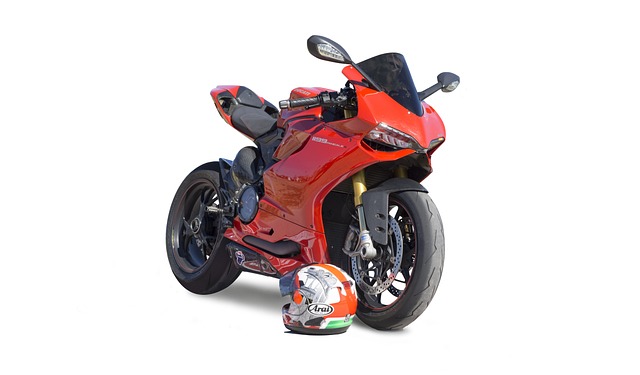Welcome to our informative article on the cost of cranial helmets! If you or your little one has ever needed a cranial helmet, you’re probably familiar with the questions that arise. How much does it cost? Is it covered by insurance? Are there any other options? We understand these concerns can be overwhelming, but fret not! In this article, we’ll dive deep into the world of cranial helmets, unlocking the mystery behind their cost and shedding light on various considerations that may affect your financial decision. So, let’s embark on this friendly journey together and find out just how much a cranial helmet may set you back!
1. Understanding the Importance of Cranial Helmets for Babies
Why are cranial helmets important for babies?
Cranial helmets, also known as baby helmets or orthotic helmets, are specially designed devices that are used to correct cranial asymmetry or abnormal head shape in infants. They are typically prescribed by pediatricians and orthotists for infants who have plagiocephaly, brachycephaly, or other cranial conditions.
It’s crucial to understand that cranial asymmetry can occur for various reasons, including prolonged pressure on one part of the baby’s skull while lying on their back, or due to restricted in-utero space. However, early intervention with the use of cranial helmets has proven effective in reshaping the skull of infants, providing them with a more symmetrical and aesthetically pleasing head shape.
Benefits of using cranial helmets:
- Promotes proper brain development: By gently guiding the growth of the baby’s skull, cranial helmets help ensure optimal brain development and minimize potential developmental delays.
- Improves facial symmetry: Cranial helmets aid in creating a rounder and evenly shaped head, improving the overall symmetry of the baby’s face.
- Enhances self-confidence: As babies grow older, having a more proportionate head shape can boost their self-esteem, allowing them to feel more confident and at ease in social settings.
- Normalizes head circumference: A cranial helmet helps in maintaining a proportional head circumference, which is essential for proper skull growth and reducing the risk of various complications.
The use of cranial helmets is safe and painless for infants. However, it’s important to consult a healthcare professional before considering the use of a cranial helmet for your baby, as they will be able to provide a proper diagnosis and determine the most suitable treatment plan.
2. Why Is Cranial Helmet Therapy Necessary?
Cranial helmet therapy, also known as cranial orthosis, is a non-invasive and highly effective treatment method for babies with plagiocephaly, brachycephaly, or other forms of positional head deformities. This therapy involves the use of a custom-made helmet that gently and constantly molds the baby’s skull to correct the shape and restore normal symmetry.
There are several reasons why cranial helmet therapy may be necessary for infants with head deformities. Firstly, these conditions can cause aesthetic concerns, affecting the baby’s appearance and potentially leading to self-consciousness as they grow older. Additionally, untreated cranial deformities can lead to functional issues such as misalignment of facial features, jaw misalignment, and vision difficulties.
- Corrects head shape and promotes symmetrical growth
- Prevents future health complications
- Enhances overall appearance and self-esteem
Bold clinical studies have shown that cranial helmet therapy is a safe and efficient treatment option, allowing for successful correction of head deformities in the vast majority of cases. It is a non-invasive alternative to surgical intervention and provides a pain-free experience for babies, who usually adjust to wearing the helmet within a few days.
3. Exploring the Factors Affecting the Cost of Cranial Helmets
When it comes to cranial helmets, several factors can affect their cost. Understanding these factors is crucial in helping you make an informed decision and find the helmet that meets your needs while staying within your budget.
First and foremost, the material used in the construction of the helmet plays a significant role in determining its price. While some helmets are made from standard plastic, others utilize more advanced materials like thermoplastics or carbon fiber. The use of these high-quality materials often results in a higher cost due to their increased durability, lightweight nature, and ability to provide better protection. So, when considering a cranial helmet, be sure to take note of the material used and consider what level of protection you require.
- Design and customization: Another factor influencing the cost is the complexity of the helmet’s design and the level of customization it offers. Helmets with intricate designs or specific customizations tend to command a higher price tag.
- Adjustability: The level of adjustability provided by a cranial helmet can also affect its cost. Helmets that offer a greater range of adjustments to ensure a comfortable fit for the wearer may be priced higher due to the extra features and technology required.
- Brand and reputation: The reputation and brand of a cranial helmet manufacturer can also impact its cost. Established brands that have built a strong reputation for producing top-quality helmets often come with a higher price point. However, they also provide the assurance of reliability and trusted performance.
- Additional features: Other additional features such as ventilation systems, antibacterial linings, and accessories can also contribute to the overall cost of a cranial helmet.
By considering these factors, you can make a more informed decision when selecting a cranial helmet that suits your needs and budget. Remember, finding the right balance between cost and functionality is key to ensuring your safety and comfort. So, take your time, weigh your options, and choose wisely!
4. Breaking Down the Expenses: What to Expect when Investing in a Cranial Helmet
Investing in a cranial helmet for your child can be a significant decision, but it is crucial to understand the expenses involved. Here, we break down the costs associated with purchasing and maintaining a cranial helmet, so you can be well-prepared and make an informed investment.
Initial Cost:
When purchasing a cranial helmet, the initial cost typically ranges between $1,500 and $3,500, depending on the brand, customization options, and the complexity of the case. It’s essential to consult with a healthcare professional and seek recommendations before making a purchase. Keep in mind that some insurance plans may offer coverage for cranial helmets, so it’s worth checking with your provider to see if you are eligible for reimbursement or partial coverage.
Additional Expenses:
Alongside the initial cost, there are a few additional expenses to consider when investing in a cranial helmet. These may include follow-up appointments with the specialist who prescribed the helmet, adjustments to the helmet to accommodate your child’s head growth, and any potential replacement parts. It is crucial to factor in these ongoing costs when budgeting for your investment. Again, checking with your insurance provider regarding potential coverage for additional expenses is always recommended.
5. Comparing Pricing Options: Traditional vs. 3D-Printed Helmets
When it comes to choosing a helmet, pricing is an important factor to consider. Let’s take a look at the differences between traditional helmets and 3D-printed helmets in terms of pricing:
Traditional helmets:
- Traditional helmets are widely produced and readily available in the market.
- They are manufactured using traditional manufacturing processes, which can involve higher production costs.
- The pricing of traditional helmets varies depending on the brand, materials used, and additional features.
- On average, traditional helmets can range from $50 to $200.
3D-printed helmets:
- 3D-printed helmets are relatively new to the market and offer a unique manufacturing process.
- Using advanced technology, these helmets are created layer by layer through additive manufacturing.
- While the initial cost of 3D-printed helmets can be higher due to the technology involved, the ability to customize and create innovative designs may outweigh the price difference for some individuals.
- Custom 3D-printed helmets can start around $200 and go up depending on personalization and design complexity.
Considering the pricing options for traditional helmets and 3D-printed helmets, it’s important to weigh your budget, preferences, and requirements to make the best choice for your helmet needs.
6. Unveiling Insurance Coverage for Cranial Helmet Therapy
Are you or your child undergoing cranial helmet therapy for the treatment of positional plagiocephaly or brachycephaly? Good news! We’re thrilled to announce that insurance coverage for cranial helmet therapy is now available!
Here’s what you need to know:
- Insurance plans now cover cranial helmet therapy: Many insurance providers have recognized the importance of cranial helmet therapy and now offer coverage for this treatment option. This means that you can receive the necessary treatment without worrying about the financial burden.
- Eligibility requirements: While insurance coverage is available, it’s essential to check if you meet the eligibility criteria. Typically, these requirements include a medical diagnosis and recommendation from a healthcare professional who specializes in cranial helmet therapy. Contact your insurance provider or consult your pediatrician to determine if you qualify.
- Pre-authorization process: Before proceeding with cranial helmet therapy, it’s crucial to reach out to your insurance company for pre-authorization. This step ensures that your insurance plan will cover the treatment and helps avoid any unexpected expenses. The pre-authorization process includes providing relevant medical documentation, submitting claim forms, and seeking approval from your insurance company.
We understand the financial aspect of cranial helmet therapy can be concerning, but with the availability of insurance coverage, it’s now more accessible than ever. Take advantage of this opportunity and provide your child with the best care possible. Don’t hesitate to reach out to our team if you have any questions or require assistance throughout the insurance process. We’re here to support you every step of the way!
7. Tips for Affording a Cranial Helmet: Funding Options and Assistance Programs
If you’re in need of a cranial helmet for your child, there are various funding options and assistance programs available to alleviate the financial burden. Here are some tips to help you afford a cranial helmet:
Research insurance coverage: Contact your health insurance provider to determine if cranial helmet expenses are covered under your plan. Many insurance companies may cover the cost of the helmet if it is deemed medically necessary.
Look into state or government aid: Some states offer financial assistance programs for families who cannot afford a cranial helmet. Check with your local social services or health department to find out if you qualify for any government aid programs.
Explore non-profit organizations: There are several non-profit organizations that provide funding assistance for cranial helmets. These organizations usually have specific criteria for eligibility, so be sure to research and apply to those that align with your needs.
Consider crowd funding: Platforms like GoFundMe or Kickstarter can help you raise funds for a cranial helmet. Create a compelling campaign and share it with friends, family, and your community to help you reach your funding goal.
Consult your healthcare provider: Speak with your child’s healthcare provider or pediatrician, as they may have knowledge of local resources or assistance programs that can support you in affording a cranial helmet.
Look for helmet rental options: Some organizations offer helmet rental programs, allowing you to use a cranial helmet for a specific period at a reduced cost. This can be a more affordable option if you only need the helmet for a short time.
8. Making an Informed Decision: Weighing the Costs and Benefits of Cranial Helmet Therapy
When considering cranial helmet therapy for your child, it is important to carefully assess both the costs and benefits involved. By understanding the advantages and potential disadvantages, you can make a well-informed decision for your little one’s health and well-being.
Benefits:
- Corrects head shape: Cranial helmet therapy has been proven effective in correcting skull deformities, such as plagiocephaly or brachycephaly. It gently guides the growth of your baby’s skull, helping to establish a more symmetrical shape.
- Enhances self-esteem: By correcting head shape early on, cranial helmet therapy can prevent potential teasing or self-consciousness your child may experience as they grow older. This can positively impact their self-esteem and overall confidence.
- Improves neurological development: By correcting skull asymmetry, cranial helmet therapy can promote proper brain development, reducing the risk of potential developmental delays or issues.
Costs:
- Financial investment: Cranial helmets can be expensive, with costs varying depending on factors such as the provider, insurance coverage, and any additional required appointments. It is essential to research and understand the financial commitment involved before moving forward with this therapy.
- Adjustment period: Your child may need time to adapt to wearing the cranial helmet, which can lead to temporary discomfort or episodes of fussiness. Understanding and being prepared for this adjustment period can help manage any potential challenges.
- Maintenance and care: Regular cleaning and maintenance of the cranial helmet is necessary to ensure hygiene and effectiveness. This requires a commitment of time and effort on the part of the parents or caregivers.
By weighing the costs and benefits of cranial helmet therapy, you can make a confident decision that is best for your child. Remember to consult with a healthcare professional to discuss your child’s specific needs, explore alternatives if applicable, and determine the most suitable course of action.
FAQ
Q: What is a cranial helmet and why would someone need it?
A: A cranial helmet, also known as a cranial orthosis, is a specialized headgear used to help correct the shape of a baby’s skull. It is typically prescribed for infants who have developed plagiocephaly or brachycephaly, conditions where the skull may develop flat spots or an abnormal shape due to external pressures.
Q: How much does a cranial helmet cost?
A: The cost of a cranial helmet can vary. On average, the price can range between $2,000 and $4,000. However, it’s important to keep in mind that the cost may differ based on various factors such as the location, the clinic or provider, and the specific treatment plan required for each individual baby.
Q: Are cranial helmets covered by health insurance?
A: In certain cases, health insurance may cover the cost of a cranial helmet. However, coverage varies greatly depending on the insurance provider and the specific policy. Some plans may cover the entire cost, while others may cover a portion or not cover it at all. It is advised to consult with your insurance provider to understand the coverage options available.
Q: Can I purchase a cranial helmet without insurance coverage?
A: Yes, it is possible to purchase a cranial helmet even without insurance coverage. However, it’s important to consider the potential financial burden, as it can be quite expensive. If the cost is a concern, it is recommended to explore different financing options or speak with the cranial helmet provider to discuss any available payment plans or financial assistance programs.
Q: How long does a baby typically wear a cranial helmet?
A: The duration for which a baby wears a cranial helmet can vary based on the severity of their condition and their individual progress. Typically, the average treatment length ranges between 3 to 6 months. However, it is ultimately up to the healthcare provider to determine the necessary duration based on the baby’s specific needs.
Q: Are there any alternatives to using a cranial helmet for corrective treatment?
A: While a cranial helmet is a commonly prescribed solution, there may be alternative treatments available depending on the severity of the baby’s condition. Repositioning techniques, physical therapy exercises, and specially designed pillows are non-invasive methods that can help correct mild cases of plagiocephaly. It is recommended to consult with a healthcare professional to determine the most suitable treatment option for your child.
Q: What are the potential benefits of using a cranial helmet?
A: The primary goal of using a cranial helmet is to correct the shape of a baby’s skull and promote symmetrical growth. By applying gentle, constant pressure to specific areas of the skull, the helmet encourages the growth of the flattened or misshapen parts, helping to normalize the head shape. Ultimately, the use of a cranial helmet can improve both the appearance and overall symmetry of the baby’s head.
Key Takeaways
In conclusion, we hope this article has shed light on the various factors involved in determining the cost of a cranial helmet. While every case is unique and the prices may vary, understanding the underlying factors can help you make informed decisions for your little one. Remember, the cost encompasses multiple aspects, including the helmet itself, the fitting process, follow-up appointments, and other additional services.
It’s important to consult with a healthcare professional and explore various options to find the best value for your specific needs. Whether it’s insurance coverage, financing plans, or seeking out local resources, there are often avenues to help alleviate the financial burden.
We understand that the journey towards finding the right cranial helmet for your child may seem overwhelming at first, but we assure you that with research, support, and a positive mindset, it’s a path worth exploring. Don’t hesitate to reach out to healthcare providers, support groups, or even fellow parents who have gone through similar experiences. Connecting with others can provide reassurance and guidance during this process.
At the end of the day, the cost of a cranial helmet is an investment in your child’s future. By addressing positional plagiocephaly or other related conditions early on, you are helping ensure their optimal development and well-being. Remember, you are not alone in this journey, and there are many resources available to help you unlock the best possible outcome for your little one.
So, take a step forward, armed with knowledge and a friendly smile, as you navigate this path towards unlocking a happy, healthy future for your child.











